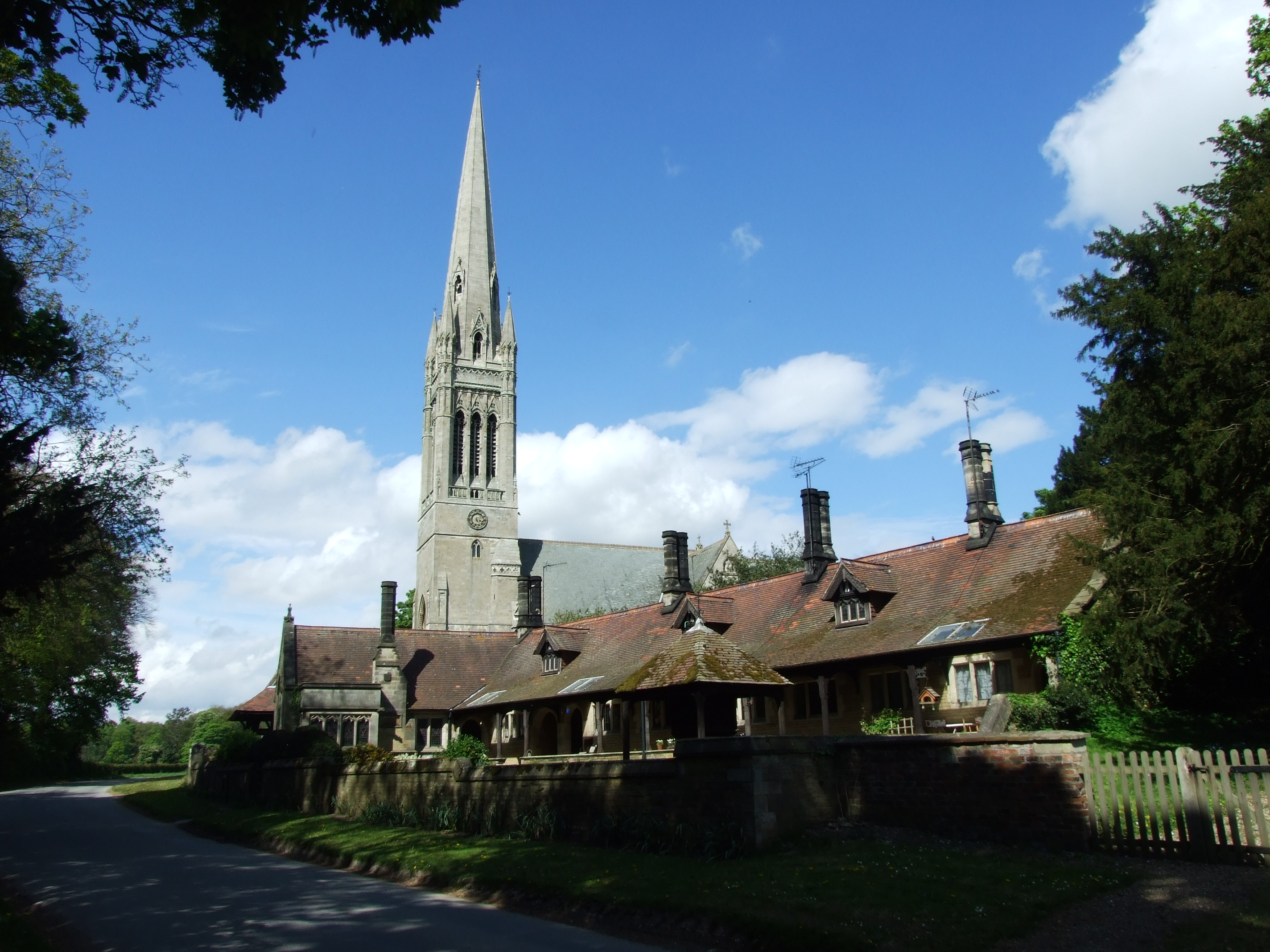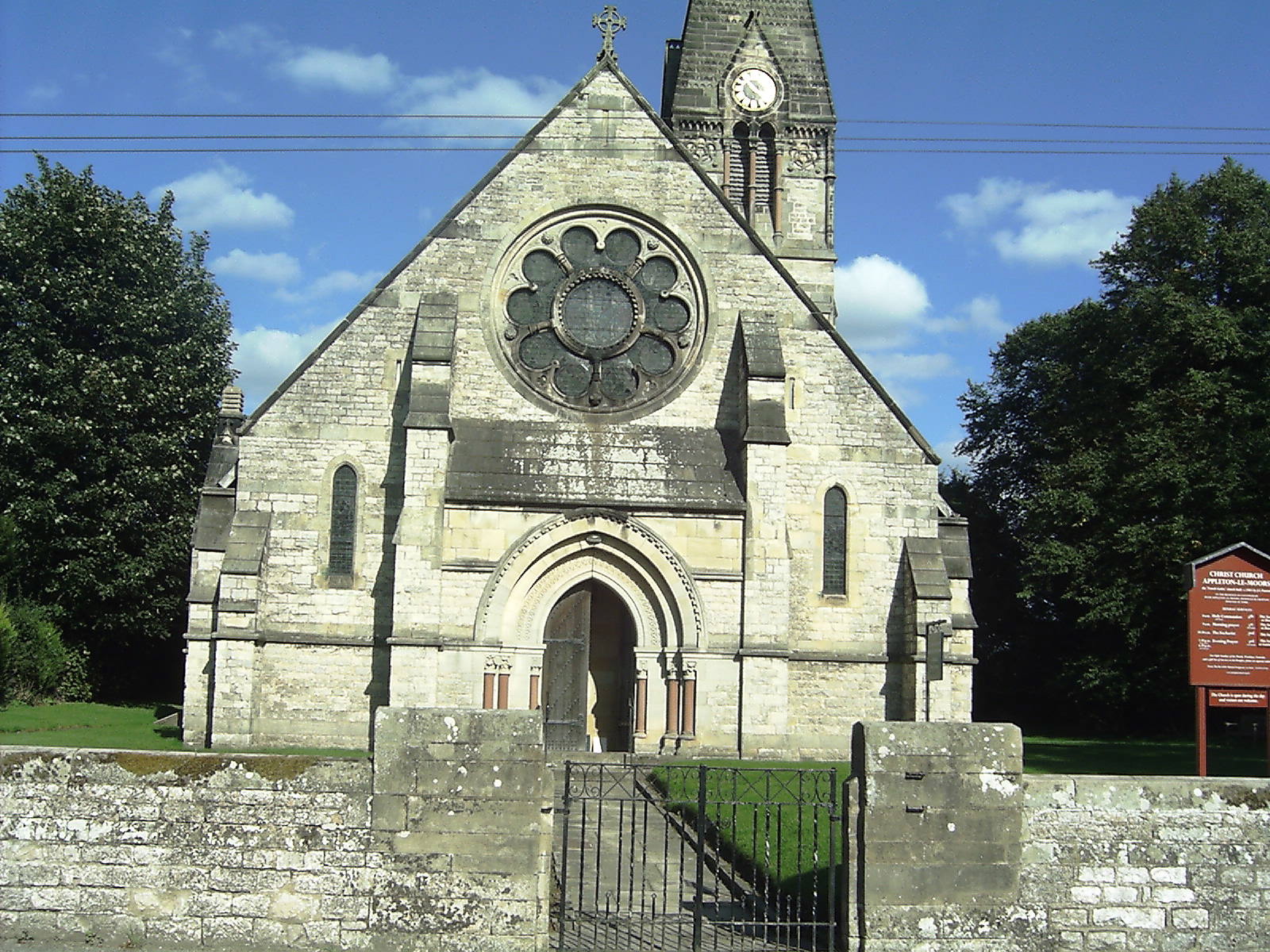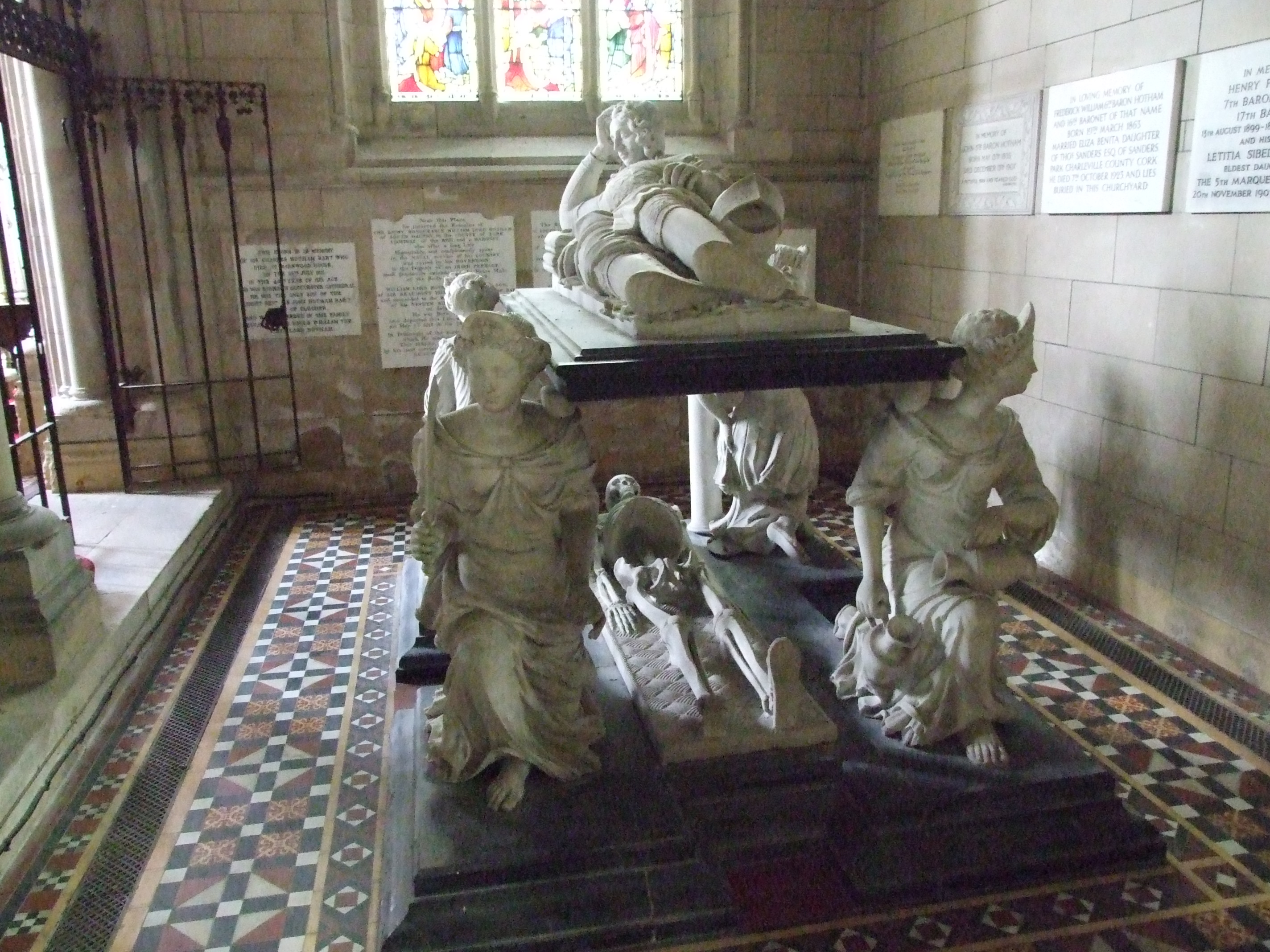|
J.L. Pearson
John Loughborough Pearson (5 July 1817 – 11 December 1897) was a British Gothic Revival architect renowned for his work on churches and cathedrals. Pearson revived and practised largely the art of vaulting, and acquired in it a proficiency unrivalled in his generation. He worked on at least 210 ecclesiastical buildings in England alone in a career spanning 54 years. Early life and education Pearson was born in Brussels on 5 July 1817. He was the son of William Pearson, etcher, of Durham, and was brought up there. At the age of fourteen, he was articled to Ignatius Bonomi, architect, of Durham, whose clergy clientele helped stimulate Pearson's long association with religious architecture, particularly of the Gothic style. He soon moved to London, where he became a pupil of Philip Hardwick (1792–1870), architect of the Euston Arch and Lincoln's Inn. Pearson lived in central London at 13 Mansfield Street (where a blue plaque commemorates him), and he was awarded the RI ... [...More Info...] [...Related Items...] OR: [Wikipedia] [Google] [Baidu] |
Walter William Ouless
Walter William Ouless (21 September 1848 – 25 December 1933) was a British portrait painter from Jersey. He became an Associate of the Royal Academy (ARA) in 1877 and a full member (RA) in 1881. Life and career He was born in 1848 at 53 Paradise Row, New Street, Saint Helier, at the home where his father, marine artist Philip John Ouless, had established his studio in the previous year. His mother was Caroline Savage. He was educated at Victoria College and went to London in 1864, where he entered the Royal Academy schools in 1865. His earliest work was in the field of genre painting, but his compatriot Millais advised him to concentrate on portrait painting, in which field he established a successful career. In later life he turned to landscape painting. Ouless was "one of the best-known portraitists of the latter years of the nineteenth century", regarded as an "impressive exponent of character". He was a volunteer in the Artists Rifles. His daughter Catherine Ouless (1 ... [...More Info...] [...Related Items...] OR: [Wikipedia] [Google] [Baidu] |
Lincoln's Inn
The Honourable Society of Lincoln's Inn is one of the four Inns of Court in London to which barristers of England and Wales belong and where they are called to the Bar. (The other three are Middle Temple, Inner Temple and Gray's Inn.) Lincoln's Inn, along with the three other Inns of Court, is recognised as being one of the world's most prestigious professional bodies of judges and lawyers. Lincoln's Inn is situated in Holborn, in the London Borough of Camden, just on the border with the City of London and the City of Westminster, and across the road from London School of Economics and Political Science, Royal Courts of Justice and King's College London's Maughan Library. The nearest tube station is Holborn tube station or Chancery Lane. Lincoln's Inn is the largest Inn, covering . It is believed to be named after Henry de Lacy, 3rd Earl of Lincoln. History During the 12th and early 13th centuries, the law was taught in the City of London, primarily by the clergy. Then two ... [...More Info...] [...Related Items...] OR: [Wikipedia] [Google] [Baidu] |
St Augustine's, Kilburn
Saint Augustine's, Kilburn, is a Church of England church in the area of Kilburn, in North London, United Kingdom. Because of its large size and ornate architecture, it is sometimes affectionately referred to as "the Cathedral of North London", although the church is not a cathedral in any official sense. History St Augustine's was founded by Richard Carr Kirkpatrick in the Anglo-Catholic tradition in 1870. By 1871, a foundation stone had been laid and the original "iron church" was subsequently replaced by a much more ambitious building, a Gothic Revival church designed by John Loughborough Pearson. It is listed as a Grade I building by Historic England. Architecture Pearson's plans called for a red brick structure, vaulted ceilings, and extensive interior stone sculpture in a style reminiscent of 13th-century Gothic architecture. The church was consecrated in 1880, but the tower and spire, remarkable for such structures in the Victorian era, were not constructed until 1897– ... [...More Info...] [...Related Items...] OR: [Wikipedia] [Google] [Baidu] |
St Mary Dalton Holme 2007
ST, St, or St. may refer to: Arts and entertainment * Stanza, in poetry * Suicidal Tendencies, an American heavy metal/hardcore punk band * Star Trek, a science-fiction media franchise * Summa Theologica, a compendium of Catholic philosophy and theology by St. Thomas Aquinas * St or St., abbreviation of "State", especially in the name of a college or university Businesses and organizations Transportation * Germania (airline) (IATA airline designator ST) * Maharashtra State Road Transport Corporation, abbreviated as State Transport * Sound Transit, Central Puget Sound Regional Transit Authority, Washington state, US * Springfield Terminal Railway (Vermont) (railroad reporting mark ST) * Suffolk County Transit, or Suffolk Transit, the bus system serving Suffolk County, New York Other businesses and organizations * Statstjänstemannaförbundet, or Swedish Union of Civil Servants, a trade union * The Secret Team, an alleged covert alliance between the CIA and American ind ... [...More Info...] [...Related Items...] OR: [Wikipedia] [Google] [Baidu] |
North Yorkshire
North Yorkshire is the largest ceremonial counties of England, ceremonial county (lieutenancy area) in England, covering an area of . Around 40% of the county is covered by National parks of the United Kingdom, national parks, including most of the Yorkshire Dales and the North York Moors. It is one of four counties in England to hold the name Yorkshire; the three other counties are the East Riding of Yorkshire, South Yorkshire and West Yorkshire. North Yorkshire may also refer to a non-metropolitan county, which covers most of the ceremonial county's area () and population (a mid-2016 estimate by the Office for National Statistics, ONS of 602,300), and is administered by North Yorkshire County Council. The non-metropolitan county does not include four areas of the ceremonial county: the City of York, Middlesbrough, Redcar and Cleveland and the southern part of the Borough of Stockton-on-Tees, which are all administered by Unitary authorities of England, unitary authorities. ... [...More Info...] [...Related Items...] OR: [Wikipedia] [Google] [Baidu] |
Appleton-le-Moors
Appleton-le-Moors is a village and civil parish in the Ryedale district of North Yorkshire, England. According to the 2001 census it had a population of 183, reducing to 164 in the 2011 census. Historically part of the North Riding of Yorkshire, the village is in the North York Moors National Park, and is near to Pickering and Kirkbymoorside. This ancient village is recorded in the ''Domesday Book'' and retains its classic mediaeval layout. It is a site of archaeological interest, being a rich source of finds such as flint tools, Roman coins and a mediaeval oven. It is particularly noted for its exceptionally fine 19th century church which has earned the description "the little gem of moorland churches" and is Grade I listed. It was designed by the architect J.L. Pearson in French Gothic style with elaborate decoration, a tower surmounted with a spire, and a beautiful west-facing rose window of the 10-part (i.e. botanical) design similar to the White Rose of York, with sta ... [...More Info...] [...Related Items...] OR: [Wikipedia] [Google] [Baidu] |
Dalton Holme
Dalton Holme a civil parish in the East Riding of Yorkshire in England. It is situated to the north-west from the market town of Beverley and covering an area of . It is made up of two villages, South Dalton and Holme on the Wolds, which over the years have become joined. Both the villages are run by the Dalton Estate, owned by the Hotham Family, and are occupied by estate workers and paying tenants. The 18th century Dalton Hall is the home of Lord Hotham, whose family have owned land in the area for generations. The hall was designated a Grade II* listed building in 1952 and is now recorded in the National Heritage List for England, maintained by Historic England. The spire of St Mary's, the 19th-century church, is over high and can be seen for miles around. It was built to the design of John Loughborough Pearson in 1858 to replace an older parish church. Inside the church are a number of monuments to the Hotham family; the older monuments were transferred from the ea ... [...More Info...] [...Related Items...] OR: [Wikipedia] [Google] [Baidu] |
Westminster
Westminster is an area of Central London, part of the wider City of Westminster. The area, which extends from the River Thames to Oxford Street, has many visitor attractions and historic landmarks, including the Palace of Westminster, Buckingham Palace, Westminster Abbey, Westminster Cathedral and much of the West End shopping and entertainment district. The name ( ang, Westmynstre) originated from the informal description of the abbey church and royal peculiar of St Peter's (Westminster Abbey), west of the City of London (until the English Reformation there was also an Eastminster, near the Tower of London, in the East End of London). The abbey's origins date from between the 7th and 10th centuries, but it rose to national prominence when rebuilt by Edward the Confessor in the 11th. Westminster has been the home of England's government since about 1200, and from 1707 the Government of the United Kingdom. In 1539, it became a city. Westminster is often used as a m ... [...More Info...] [...Related Items...] OR: [Wikipedia] [Google] [Baidu] |
Vauxhall
Vauxhall ( ) is a district in South West London, part of the London Borough of Lambeth, England. Vauxhall was part of Surrey until 1889 when the County of London was created. Named after a medieval manor, "Fox Hall", it became well known for the Vauxhall Pleasure Gardens. From the Victorian period until the mid-20th century, Vauxhall was a mixed industrial and residential area, of predominantly manual workers' homes, many demolished and replaced by Lambeth Council with social housing after the Second World War, and business premises, including large railway, gas, and water works. These industries contrasted with the mostly residential neighbouring districts of Kennington and Pimlico. As in neighbouring Battersea and Nine Elms, riverside redevelopment has converted most former industrial sites into residential properties and new office space. Vauxhall has given its name to the Vauxhall parliamentary constituency and Vauxhall Motors. Geography Vauxhall is south of Charing C ... [...More Info...] [...Related Items...] OR: [Wikipedia] [Google] [Baidu] |
St Peter's Church, Vauxhall
St Peter's, Vauxhall, is a Church of England church on Kennington Lane, Vauxhall, London SE11. The church was planned in 1860 by John Loughborough Pearson, and built in 1863-4 together with schools, orphanage and vicarage, and is one only a few Grade II* listed buildings in the area. This was Pearson's first major town church. The interior is more attractive than the exterior would suggest. That is partly because the idea was that the spirituality of the interior would reveal itself on entry, but also because the planned-for statement tower never got built. The church cost only £8,000 to build, but is richly decorated inside. It has an amazingly complete set of fittings. Also, a rather splendid small organ by Lewis which packs a serious punch. There are concerts from time to time in the church, which has a very good acoustic. The St Peter's Singers sing evensong on the last Sunday of the month but not in summer and with adjustments on account of Easter and Advent/Christm ... [...More Info...] [...Related Items...] OR: [Wikipedia] [Google] [Baidu] |
Yorkshire
Yorkshire ( ; abbreviated Yorks), formally known as the County of York, is a Historic counties of England, historic county in northern England and by far the largest in the United Kingdom. Because of its large area in comparison with other English counties, functions have been undertaken over time by its subdivisions, which have also been subject to History of local government in Yorkshire, periodic reform. Throughout these changes, Yorkshire has continued to be recognised as a geographic territory and cultural region. The name is familiar and well understood across the United Kingdom and is in common use in the media and the Yorkshire Regiment, military, and also features in the titles of current areas of civil administration such as North Yorkshire, South Yorkshire, West Yorkshire and the East Riding of Yorkshire. Within the borders of the historic county of Yorkshire are large stretches of countryside, including the Yorkshire Dales, North York Moors and Peak District nationa ... [...More Info...] [...Related Items...] OR: [Wikipedia] [Google] [Baidu] |
Ellerker
Ellerker is a village and civil parish in the East Riding of Yorkshire, England. It is situated approximately west of Hull city centre and east of the market town of Howden. It lies south of the A63 road junction with the A1034 road. According to the 2011 UK Census, Ellerker parish had a population of 307, a decrease on the 2001 UK Census figure of 320. Ellerker lies within the Parliamentary constituency of Haltemprice and Howden an area that mainly consists of middle class suburbs, towns and villages. The area is affluent and has one of the highest proportions of owner-occupiers in the country. 'Ellerker' means a "marsh where alder trees grow", from Old English ''alor'' or ''aler'' "alder" and Old Norse ''kjarr'' "marsh". The name was recorded as ''Alrecher'' in the 11th century and ''Alekirr'' in 1139. Same name as Orcher (Normandy, ''Aurichier'' 12th century). In 1823 Ellerker was in the parish of Brantingham and the Wapentake of Howdenshire. Village population w ... [...More Info...] [...Related Items...] OR: [Wikipedia] [Google] [Baidu] |






